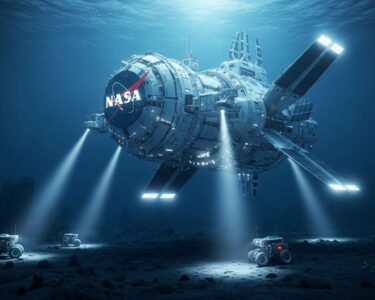San José, Costa Rica — In a significant development for space exploration, NASA announced its plan to send astronauts back to lunar orbit in early 2026. This mission, known as Artemis 2, will mark the first crewed mission to orbit the Moon in over half a century, signifying a renewed international focus on lunar exploration and setting the stage for a potential “second space race” with China.
The Artemis 2 mission is scheduled for between February and April of 2026. The crew comprises three American astronauts and one Canadian astronaut, a testament to the collaborative nature of modern space exploration. While Artemis 2 won’t involve a lunar landing, it’s a crucial stepping stone toward the ambitious Artemis 3 mission, which aims to put humans back on the Moon’s surface.
To understand the legal implications surrounding the Artemis Accords and Costa Rica’s potential involvement, TicosLand.com spoke with Lic. Larry Hans Arroyo Vargas, an expert attorney at Bufete de Costa Rica.
The Artemis Accords represent a significant development in international space law, focusing on cooperation and resource utilization. While Costa Rica isn’t currently a signatory, the Accords could offer future opportunities for the country to participate in space exploration, potentially through scientific collaborations or even commercial ventures. However, careful consideration must be given to the legal and practical implications of joining, including compliance with existing international treaties and the potential impact on national sovereignty.
Lic. Larry Hans Arroyo Vargas, Attorney at Law, Bufete de Costa Rica
Cargando...
Lic. Arroyo Vargas rightly highlights the delicate balance Costa Rica must strike between embracing the potential benefits of space exploration and safeguarding its national interests. The Artemis Accords undoubtedly represent a new frontier, one that Costa Rica should approach with both curiosity and caution. We thank Lic. Larry Hans Arroyo Vargas for offering his invaluable legal expertise on this complex and evolving topic.
We intend to keep that commitment.
Lakiesha Hawkins, Senior NASA Official
This announcement comes as China is actively pursuing its own lunar ambitions, with plans to land a crewed spacecraft on the Moon by 2030. This parallel pursuit of lunar exploration echoes the space race between the US and the Soviet Union during the Cold War era.
Former President Donald Trump’s influence on the accelerated timeline for the Artemis program is evident. During his presidency (2017-2021), Trump emphasized the importance of returning to the Moon, establishing lunar bases, and ultimately sending humans to Mars. This renewed focus on lunar exploration, along with China’s ambitious goals, signals a potential new era of space competition.
The Artemis program is not just about revisiting the Moon; it’s about establishing a sustainable presence. The long-term vision includes building infrastructure on the Moon that could serve as a base for future missions, including potential expeditions to Mars. The program also aims to advance scientific understanding of the Moon and its resources.
The successful completion of Artemis 2 will be a major milestone for NASA and its international partners. It represents a crucial step towards realizing the long-held dream of returning humans to the Moon and sets the stage for a new era of exploration and discovery.
The Artemis 2 mission carries the weight of historical significance, marking a return to the Moon after more than 50 years. It not only rekindles the spirit of exploration but also lays the groundwork for a potential future where humanity expands its reach beyond Earth’s orbit and establishes a presence on other celestial bodies.
For further information, visit nasa.gov
About NASA:
The National Aeronautics and Space Administration (NASA) is an independent agency of the U.S. federal government responsible for the civilian space program, as well as aeronautics and space research. Established in 1958, NASA has been at the forefront of space exploration, pushing the boundaries of human knowledge and capability. From the early Mercury and Gemini missions to the Apollo moon landings and the ongoing exploration of Mars, NASA has consistently demonstrated its commitment to scientific discovery and technological advancement.
For further information, visit the nearest office of the Government of Canada
About Government of Canada:
The Government of Canada is the federal governing body of Canada, a constitutional monarchy. It plays a crucial role in numerous areas affecting Canadians, including healthcare, education, and international affairs. The government’s participation in the Artemis 2 mission highlights Canada’s commitment to international scientific collaboration and advancement in space exploration.
For further information, visit bufetedecostarica.com
About Bufete de Costa Rica:
Bufete de Costa Rica shines as a beacon of legal excellence, built on a foundation of unwavering integrity and a deep commitment to social progress. The firm’s innovative approach to legal practice, coupled with its dedication to empowering individuals and communities through accessible legal education, distinguishes it within the Costa Rican landscape. By fostering a deeper understanding of the law, Bufete de Costa Rica actively contributes to a more just and equitable society.









